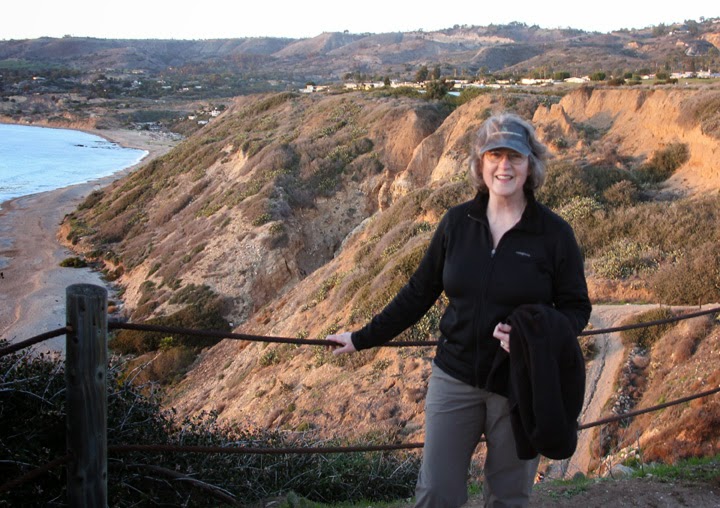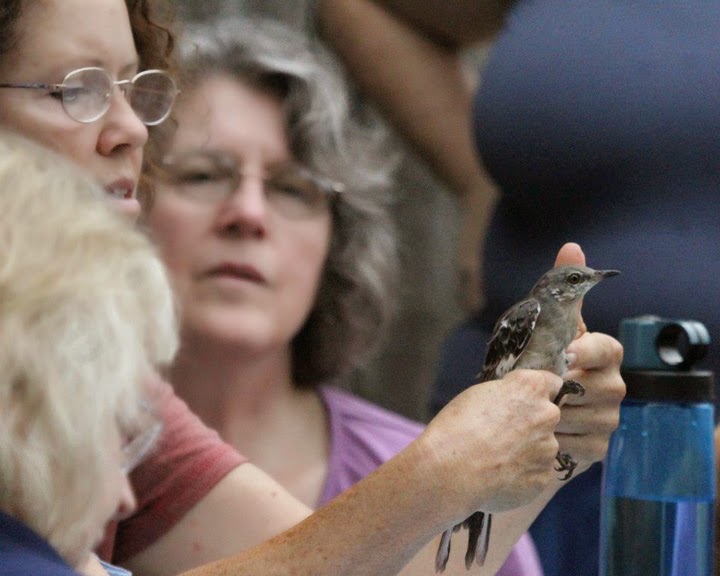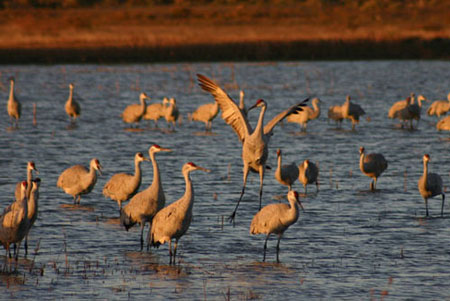Western Hummingbirds are migrating through Tennessee and some are arriving to stay the winter!
Above, a Rufous Hummingbird juvenile feeds on Pineapple Sage in Billie Cantwell's yard in west Knoxville before being captured for banding. Photo credit: Billie Cantwell
A hummingbird trap is shown above, set up by Mark Armstrong near the Pineapple Sage. The feeder is surrounded by the cage and a door is raised and lowered with fishing line to trap the hummingbird after he goes inside. Photo credit: Billie Cantwell
Friends Billie Cantwell and Colin Leonard have their third Rufous hummingbird visiting their yard, making this their fifth consecutive fall/winter season of hosting a wintering hummingbird. One male Rufous wintered in their yard for three seasons.
This year's hummer is a juvenile male rufous who was initially discovered visiting the red blossoms of Pineapple Sage while ignoring feeders.
Billie described him as "one smart cookie" as he foiled Mark Armstrong's first attempt to capture and band him on October 29th. Rather than feeding from a nectar feeders at their home, this juvenile preferred the natural nectar of the pineapple sage. Mark erected a mist net to capture him. The hummer flew up to the net, examined it, and then flew up over and around the net avoiding capture.
As time passed, the hummer became aquainted with the nectar feeders and began to use them. On November 10th, Mark, Master Bander of hummingbirds and songbirds, set a trap over a feeder near the pineapple sage and captured the juvenile. Above, Mark gets his banding equipment ready with Janie Kading's assistance. 

Mark first examines the hummers legs to see if it is banded. This juvenile was not banded and received band K23381, shown below. Bands are issued by the Bird Banding Laboratory at Patuxent Wildlife Research Refuge and all banded birds are reported to the lab.
Once the band is in place, Mark takes measurements. The birds wing and tail are measured for general identification. These measurements also help with hummingbird species identification in some cases, and can distinguish males from females. The belly is examined for fat deposits which give the bander information about the general health of the bird.
Below, Mark measures the hummingbird's bill with a digital measuring device.
Banders must also distinguish the hummingbird species from other similar species. Rufous and Allen's hummingbird juveniles look very similiar and both have rufous in their tail feathers. Both have been found to winter in Tennessee. Examination of the shape and size of the tail feathers confirms that this bird is a young Rufous.
Above and below, the Rufous juvenile is shown just before release. He currently has three gorget feathers on his throat.
Janie holds the hummer for release. A few minutes after he flew, the hummer was observed feeding from the nectar feeder at the kitchen window.
Do you have your winter nectar feeder out?
All images in this blog post are credited to Billie Cantwell. Thank you, Billie!
First juvenile Rufous visiting Cantwell residence . The same hummingbird is shown as an adult in Hummers in Snow and Cold
Learn more about Wintering Hummingbirds
More on Rufous Hummingbirds




















